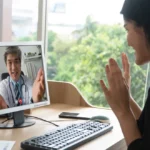Understanding the Importance of Chronic Care Management (CCM)

Before diving into the mechanics of Chronic Care Management (CCM), it’s important to understand why this coordinated approach has become a vital tool for healthcare providers. For a comprehensive overview, refer to our Comprehensive Guide to Chronic Care Management, where we explain how CCM supports patients with long-term conditions while streamlining care delivery for providers.
Chronic conditions—especially those involving persistent pain—often disrupt patients’ physical, emotional, and social well-being. Left unmanaged, they can lead to diminished independence and a reduced quality of life. That’s where CCM steps in. This model emphasizes collaborative care, bringing together a team of healthcare professionals to deliver consistent, patient-centered support between office visits. Technologies such as remote patient monitoring (RPM) play a key role in helping patients maintain daily routines and avoid unnecessary hospitalizations.
To better understand how these technologies work together to support chronic care, explore our detailed guide on RPM and CCM integration.
CCM programs often serve individuals aged 60 and above, many of whom suffer from multiple chronic conditions. Before initiating CCM, providers typically offer personalized guidance and instruction, allowing them to assess patient adherence and response. These insights form the foundation for tailored treatment plans.
For practical examples of how providers apply these strategies, explore our detailed CCM use cases across different clinical scenarios.
Once a patient is enrolled in CCM, a dedicated care team—comprising nurses, care coordinators, and specialists—monitors and manages the patient’s health remotely. Each member plays a defined role, working proactively to address the patient’s evolving needs and reduce risks, especially for those considered high-risk.
Table of Contents
ToggleThe Role of CCM During COVID-19
The COVID-19 pandemic was a defining moment for CCM. With clinics operating at limited capacity and in-person visits restricted, healthcare providers rapidly expanded their use of remote care solutions. Providers prioritized high-risk patients by developing structured remote care schedules: those experiencing severe symptoms were monitored daily or every other day, while patients with stable conditions were contacted weekly.
Despite limited access to facilities, the continuity of care never faltered. By leveraging remote patient monitoring and telephonic follow-ups, providers ensured that patients received timely interventions and remained compliant with their care plans.
Tackling Medication Shortages Through Proactive Care
One of the biggest challenges during the pandemic was the shortage of essential medications, particularly for elderly patients dependent on long-term prescriptions. CCM helped address this by maintaining up-to-date patient records, including medication schedules and dosages. Providers used this data to anticipate needs, arrange timely prescriptions, and ensure patients received their medications on schedule—minimizing the risk of lapses in treatment.
Addressing Mental Health: PTSD Within CCM
While physical symptoms are the primary focus of CCM, mental health conditions such as Post-Traumatic Stress Disorder (PTSD) are increasingly being recognized within the scope of chronic care. The isolation and uncertainty caused by the pandemic led to a rise in anxiety and depressive symptoms, especially among older adults.
CCM teams are trained to identify behavioral health concerns and connect patients with the necessary resources. Family involvement is crucial here—loved ones provide valuable feedback on mood changes, sleep patterns, and other signs that may indicate underlying mental health issues. Encouraging emotional support from family and ensuring patients feel connected plays a significant role in their recovery journey.
Family’s Role in CCM Success
Family engagement is a cornerstone of successful CCM. Caregivers and family members often provide firsthand observations that enhance treatment planning and improve outcomes. Their input helps care teams assess how well patients are responding to interventions and whether adjustments are needed.
During in-person visits, it’s vital to follow infection control protocols. Patients and caregivers should wear masks and maintain hygiene to ensure safety. A supportive environment—both clinically and at home—greatly increases patient confidence and treatment adherence.
Most Recent Blogs
Categories
Related Blog
- February 21, 2025 | Read Time: 6 mins
RPM’s Role in Identifying Early Symptoms of Chronic Conditions for Prevention
Remote patient monitoring (RPM) systems allow for the continuous tracking of essential...
Learn More- December 5, 2024 | Read Time: 8 mins
How Remote Patient Monitoring Improves Chronic Care Management?
Chronic Care Management (CCM) provides coordinated support for patients with multiple long-term...
Learn More- November 22, 2024 | Read Time: 8 mins
Chronic, Principal, and Transitional Care Management Software: Which Is Right for You?
Want to boost patient engagement and health outcomes at your healthcare practice?...
Learn More


